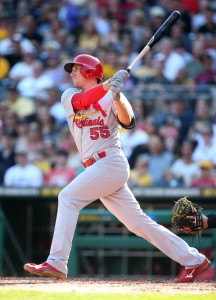The Red Sox have placed center fielder Jackie Bradley Jr. on the 10-day DL, as Ian Browne of MLB.com was among those to report. Bradley was diagnosed with a knee sprain caused by a misstep while running the bases. An MRI did not reveal more significant damage, so the hope is he won’t miss much more than the minimum.
Let’s check in on a few health situations of note from around the game …
- Giants star Buster Posey departed the club’s game today after being struck in the head by an errant pitch, but thankfully indications are he escaped any significant injury. As Andrew Baggarly of the Mercury News writes, Posey passed a concussion test and told teammates he was fine. That’s not conclusive, of course, but for now the team does not plan to make a roster move to fill in for the stellar backstop, as Baggarly further notes on Twitter.
- Mariners shortstop Jean Segura was also pulled today with an injury, though it doesn’t appear to be a major concern. Manager Scott Servais told reporters, including MLB.com’s Greg Johns (Twitter link), that it’s a “very mild” hamstring issue. For now, at least, the key offseason addition won’t be headed for the DL, with Servais calling him day to day.
- The Blue Jays anticipate that closer Roberto Osuna will be able to return to action tomorrow, as Ben Nicholson-Smith of Sportsnet.ca reports. The excellent young reliever opened the year on the 10-day DL owing to a cervical spasm, though that placement was backdated. He made it through a sim game and now seems ready to return to the majors — where he’ll try to pick up where he left off in a strong 2016 season.
- There are several important Rockies players still working back from injury, and Nick Groke of the Denver Post has the latest. Ian Desmond, Tom Murphy, and David Dahl all seem to be progressing, with the trio possibly slated to return by the end of the month. Desmond, who’ll suit up at first base for the first time when he’s ready, seems to have the clearest progression at this point. Per Groke, Desmond will start to throw and field at some point this week.
- Athletics righties Sonny Gray and Chris Bassitt are making strides in their rehabs, as Susan Slusser of the San Francisco Chronicle reports. Grey’s lat strain is healing well enough that he was able to work up to 35 pitches from the bullpen today. That could leave him on track to return tot he majors before April is out, per the report. Bassitt, meanwhile, is on the cusp of a rehab stint, though Slusser notes that he’s likely to take a full month in the minors since he’s working back from a year-long layoff owing to Tommy John surgery.
- Though he’s currently stashed at Triple-A, Cardinals righty Luke Weaver is a key piece of the organization’s depth (and future rotation plans). He is headed for a DL stint with lower back stiffness, as MLB.com’s Jenifer Langosch reports on Twitter. At present, it’s not clear what kind of an absence is anticipated.


